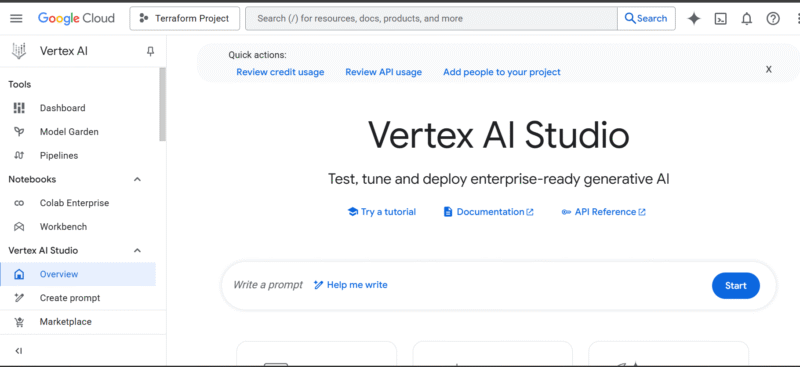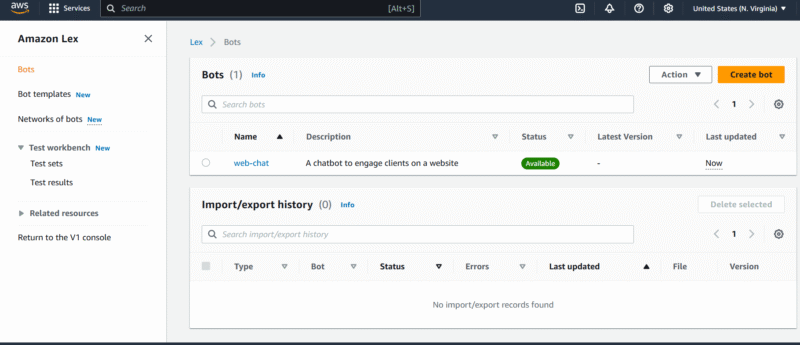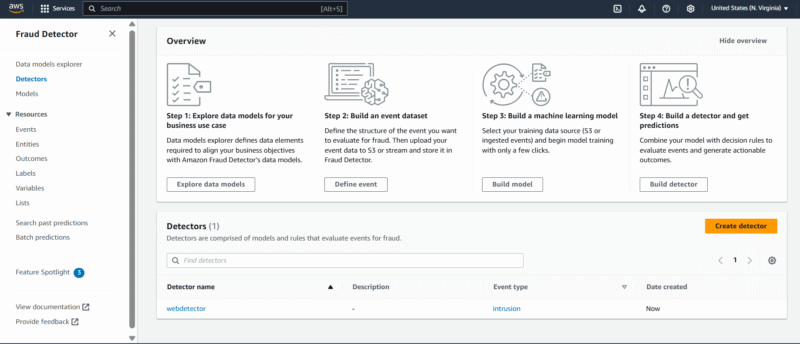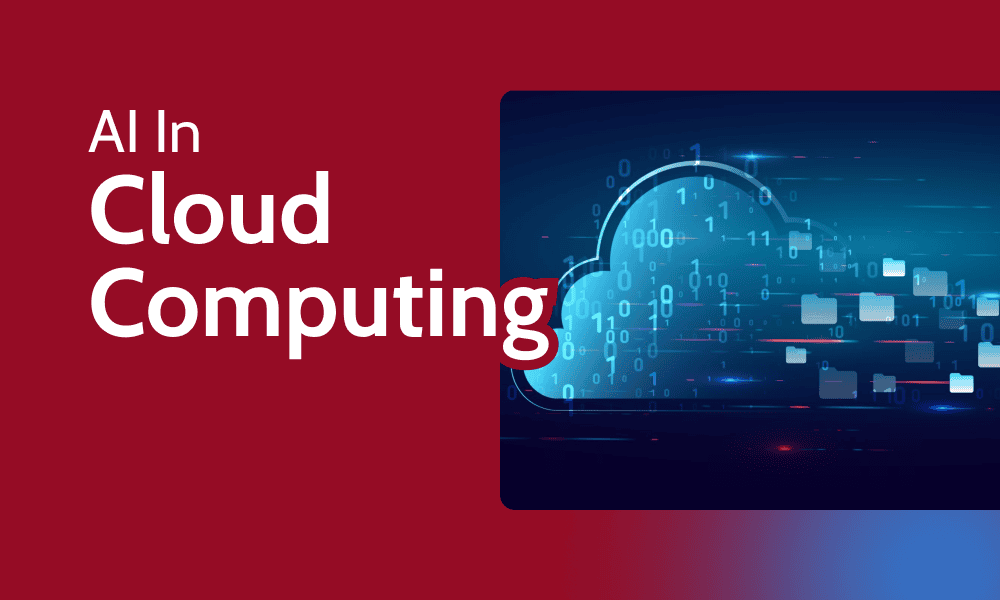Artificial intelligence (AI) is revolutionizing how businesses operate, and cloud computing platforms are no exception. By integrating AI models into cloud services, organizations can harness the power of machine learning algorithms, predictive analytics and natural language processing to drive innovation, efficiency and growth. AI helps companies process vast amounts of data, automate complex tasks and gain valuable insights to help with decision-making.
AI and cloud computing come together to create powerful synergy. Cloud-based AI allows businesses to deploy AI applications without investing in expensive hardware, while AI enhances cloud management, security and automation.
Major cloud providers such as Google Cloud, Microsoft Azure, AWS (Amazon Web Services) and Oracle Cloud offer cloud AI services, making advanced AI tools accessible to organizations of all sizes.
In this article, we’ll explore how AI is reshaping cloud environments and look at key applications, benefits and challenges, as well as what the future holds for AI.
How Has AI Transformed Cloud Computing?
The integration of artificial intelligence (AI) into cloud computing has marked a pivotal shift in the way digital infrastructure is designed, managed and optimized. Instead of simply storing data or running applications, modern cloud environments can now learn from data, predict trends, automate decisions and dynamically adapt to changing conditions.
AI has turned the cloud from a passive utility into an active decision-making ecosystem. The list below details some of the key ways in which AI has transformed cloud computing.
- Smarter resource management and auto-scaling: Traditional auto-scaling methods used to rely on predefined thresholds, such as CPU thresholds exceeding a certain limit. With the use of AI, systems can now leverage historical data, real-time performance analytics and insights to make intelligent scaling decisions.
- Advanced data analytics and insights: Before AI, analyzing vast volumes of cloud-stored data required complex querying and human interpretation. Now, machine learning models process structured and unstructured data in the cloud to identify trends, anomalies and predictive patterns to help businesses make faster data-driven decisions.
- AI-powered automation of IT operations: AI for IT operations (AIOps) helps automate the monitoring, management and troubleshooting of cloud infrastructure. AI continuously monitors logs, metrics and user behavior to detect issues, forecast outages and resolve them automatically. This reduces downtime, increases system reliability and minimizes human intervention for routine maintenance tasks.
- Enhanced cloud security: AI and machine learning models analyze user behavior, network traffic and system activity to detect anomalies that may signal a breach or vulnerability. This helps security systems become proactive, continuously learning and adapting to new threats instead of waiting for known patterns to emerge.
- Improved user experience through AI personalization: Cloud solutions are now delivering personalized experiences thanks to AI. AI learns from a user’s interaction history and uses it to predict what they are likely to want next. This leads to higher engagement, better customer satisfaction and improved business conversion rates.
How AI & Cloud Computing Work Together
AI and cloud computing are driving digital transformation. They create a synergistic relationship in which each enhances the other’s capabilities.
Cloud platforms provide scalable infrastructure and computing power that AI workloads demand, while AI unlocks new intelligence and automation capabilities within cloud environments. They enable businesses to process large data volumes, generate insights and automate tasks.
AI algorithms, especially those used for machine learning models and deep learning, require significant computational resources to train and operate effectively. Public cloud providers such as AWS, Microsoft Azure and IBM Cloud offer access to massive data centers equipped with high-performance GPUs and TPUs that are optimized for AI training.
Cloud solutions provide large data storage solutions with easy accessibility and shareability across teams and platforms. AI models require vast amounts of data to function accurately.
Cloud-based data analytics tools such as BigQuery and Amazon Redshift allow AI applications to access and analyze customer data, logs and interactions in real time, which fuels predictive analysis and business intelligence.
AI enhances the intelligence and automation of cloud services. Many cloud computing platforms embed AI tools into their services, such as automatic scaling, anomaly detection and data security enforcement. These AI capabilities help organizations reduce human error, increase operational efficiency and respond more quickly to business challenges.
AI and cloud computing intersect to enable cognitive computing and natural language processing. Cloud-based AI services such as Google Cloud’s Vertex AI and IBM Watson allow businesses to build applications that can understand, interpret and respond to human language.

Google Vertex AI Studio enables developers to build, deploy
and manage machine learning models at scale.
This empowers cloud-based AI tools such as chatbots, virtual assistants and customer service automation platforms to deliver human-like experiences at scale.
Common Applications of AI in Cloud Computing in the Business World
The integration of AI and cloud computing has improved business potential across industries. Organizations are now leveraging AI cloud services to automate processes, enhance decision-making and extract valuable insights from vast amounts of data without needing to make huge investments in on-premises infrastructure.
We go over some key applications of AI in cloud computing below.
AI-Powered Customer Support: Chatbots and Virtual Assistants
Businesses may deploy cloud-based chatbots and virtual assistants powered by natural language processing (NLP) and machine learning algorithms to handle customer queries 24/7.
These AI systems analyze queries, provide instant responses and escalate complex issues to human agents when necessary. Examples include Amazon Lex and Google Dialogflow.

Amazon Lex powers cloud-based chatbots and virtual assistants by using natural language processing to automate customer interactions at scale.
Predictive Analytics for Business Intelligence
AI-driven predictive analytics models in the cloud analyze historical and real-time business data to forecast trends, customer behavior and market shifts. This helps businesses in areas such as sales forecasting and inventory planning. The models run on cloud computing platforms, which allow business to efficiently process large datasets.
Fraud Detection and Risk Management
AI enhances cloud security by continuously monitoring transactions, logins and network activity for anomalies. Machine learning models detect unusual patterns and trigger automated responses. Tools such as Amazon Fraud Detector are trained on billions of events and continuously evolve as new patterns emerge.

Amazon Fraud Detector uses machine learning to identify suspicious patterns,
enabling real-time fraud detection and adaptive security.
Supply Chain and Logistics Optimization
AI supports supply chain management and industrial operations through predictive maintenance and logistics forecasting. AI models analyze sensor data, weather forecasts, shipping records and inventory levels in real time to optimize delivery routes, predict equipment failure and automate reordering processes.
Personalized Marketing and Recommendation Engines
AI analyzes customer data — such as purchase history and browsing behavior — stored in cloud databases to deliver personalized marketing campaigns. Recommendation engines, such as those used by Netflix and Spotify, suggest products or content based on user preferences. This leads to higher conversion rates and customer retention.
Benefits of AI in Cloud Computing
The fusion of AI and cloud computing is revolutionizing how businesses operate, offering unprecedented efficiency, scalability and intelligence. AI enhances cloud services by automating tasks, optimizing resources and extracting valuable insights from data. In exchange, cloud computing provides the scalable infrastructure needed to run AI workloads.
Integrating AI into cloud computing offers modern organizations the following benefits.
Challenges of Using AI With Cloud Computing
While integrating the cloud and AI offers immense benefits, it also presents challenges that organizations must navigate. Deploying AI workloads in the cloud involves complexities in data security, governance, performance and cost control. Organizations often face hurdles that can slow progress, impact compliance and limit the effectiveness of AI solutions.
Organizations face the following major challenges when adopting AI in the cloud.
What Does the Future Look Like for AI in Cloud Computing?
The future is bright, as both AI and cloud computing are expected to grow to meet the increasing demands of business and society.
As cloud platforms become more powerful, scalable and cost-efficient, AI is expected to become more accessible to companies of all sizes. This will help startups and SMEs implement advanced machine learning algorithms, NLP and predictive analysis to improve services and gain a competitive edge.
As cloud providers continue to enhance their cloud AI services, we expect to see more AI-driven features embedded into cloud platforms.
These include pre-trained AI models, low-code/no-code AI development environments and integrated data management tools. This will result in faster AI application deployment and improved support for business intelligence and decision-making processes.
One of the most significant developments will be the rise of cognitive cloud computing, where AI systems will simulate human thought processes and reasoning to solve complex business problems. Additionally, AI-powered cloud management tools will autonomously handle tasks like load balancing and cost optimization, which will help reduce IT overhead.
A key future trend is the expansion of AI at the edge. Instead of sending raw data to centralized cloud servers, edge AI processes information locally and then transmits insights to the cloud. This reduces latency, bandwidth costs and privacy risks. Edge AI will support processes such as predictive maintenance in manufacturing and image recognition in autonomous vehicles.
AI Concerns & Challenges
Ethical and regulatory considerations will play a central role in shaping the future of AI in cloud computing. As AI systems are entrusted with more critical functions, such as analyzing customer data and automated hiring, there will be increased scrutiny around ethical AI practices, data privacy and algorithmic transparency. Cloud providers will be expected to offer compliance, explainability and safeguards against bias.
The integration of AI into cloud services introduces new layers of security risk, such as model inversion, data poisoning and adversarial attacks. Malicious actors can use these techniques to manipulate and extract information from AI systems in the cloud.
The attack surfaces on AI systems increase as they become more distributed across cloud-native architectures. This demands robust AI-specific threat modeling and cloud-native security solutions that go beyond traditional defenses.
Many AI models deployed in cloud environments function as “black boxes.” This makes it difficult for users to understand how predictions or decisions are made. The lack of interpretability complicates debugging and undermines user trust, especially in regulated industries such as healthcare and finance.
In the future, cloud platforms will need to prioritize the integration of explainable AI tools that generate human-interpretable outputs, offer audit trails and support accountability across the full machine learning life cycle.
Final Thoughts
The integration of AI and cloud computing technology has undeniably transformed how businesses operate, offering data-driven insights, significant cost savings and high scalability. Businesses leveraging AI cloud solutions via public cloud services or cognitive cloud platforms have the tools to innovate more quickly and intelligently than before.
What steps is your organization taking to harness the power of AI and cloud computing? Are you exploring AI solutions to optimize workflows or improve data analysis? We would love to hear from you; share your thoughts and questions with us in the comment section below. Thank you for taking the time to explore AI in the cloud with us.
FAQ: Cloud Platforms & AI
-
AI is being used in cloud computing to automate processes, analyze large datasets, enhance customer experiences through tools like chatbots and support services such as predictive analytics, image recognition and real-time decision-making.
-
The four types of AI technology are reactive machines, limited memory, theory of mind and self-aware AI.
-
AI strengthens cloud security by detecting threats in real time, automating incident response, monitoring resource utilization and ensuring data protection across cloud environments.








